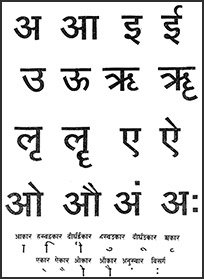Ki: 16 definitions
Introduction:
Ki means something in Hinduism, Sanskrit, Buddhism, Pali, the history of ancient India, Marathi, Hindi, Tamil. If you want to know the exact meaning, history, etymology or English translation of this term then check out the descriptions on this page. Add your comment or reference to a book if you want to contribute to this summary article.
Alternative spellings of this word include Kee.
Images (photo gallery)
(+85 more images available)
In Hinduism
Vyakarana (Sanskrit grammar)
Source: Wikisource: A dictionary of Sanskrit grammarKi (कि).—(I) kṛt affix इ (i) prescribed after धु (dhu) roots with a prefix attached;e.g.प्रदिः प्रधिः (pradiḥ pradhiḥ) cf. P.III.3.92, 93; (2) kṛt affix इ (i) looked upon as a perfect termination and, hence, causing reduplication and accusative case of the noun connected, found in Vedic Literature added to roots ending in आ (ā), the root ऋ (ṛ), and the roots गम्, हन् (gam, han) and जन् (jan); e.g. पपि (papi); सोमं, जगुरिः, जग्मिः (somaṃ, jaguriḥ, jagmiḥ) etc., cf. P. III.2.171: (2) a term used in the Jainendra Vyākaraṇa for the term संबुद्वि (saṃbudvi).

Vyakarana (व्याकरण, vyākaraṇa) refers to Sanskrit grammar and represents one of the six additional sciences (vedanga) to be studied along with the Vedas. Vyakarana concerns itself with the rules of Sanskrit grammar and linguistic analysis in order to establish the correct context of words and sentences.
India history and geography
Source: Cologne Digital Sanskrit Dictionaries: Indian Epigraphical GlossaryKi.—ḻ-iṟai (SITI; SII 12), Tamil; minor taxes, or tax fixed at a lower rate. Note: ki is defined in the “Indian epigraphical glossary” as it can be found on ancient inscriptions commonly written in Sanskrit, Prakrit or Dravidian languages.
--- OR ---
Kī.—ḻ-iṟai-ppāṭṭam (SITI), Tamil; small cesses and taxes like mīn-pāṭṭam, etc. Note: kī is defined in the “Indian epigraphical glossary” as it can be found on ancient inscriptions commonly written in Sanskrit, Prakrit or Dravidian languages.

The history of India traces the identification of countries, villages, towns and other regions of India, as well as mythology, zoology, royal dynasties, rulers, tribes, local festivities and traditions and regional languages. Ancient India enjoyed religious freedom and encourages the path of Dharma, a concept common to Buddhism, Hinduism, and Jainism.
Languages of India and abroad
Pali-English dictionary
Source: Sutta: The Pali Text Society's Pali-English DictionaryKi°, 2nd. stem of interr. pron. (cp. ka° ku°); 1. in oblique cases of ko (kaḥ), as Gen. kissa. Loc. kismiṃ & kiṃhi. ‹-› 2. in nt. kiṃ what? (cp. Gr. ti/, Lat. quid; ending —m besides —d in kad, as Lat. quom, tum besides quod, id).—3. in primary derivations, as kittaka, kīva (=Sk. kiyant) which stands in same relation to *qǔi as Lat. quantus to *qǔo; and in secondary derivations from kiṃ, as kiñci, kiñcakkha, kīdisa, etc. (Page 212)

Pali is the language of the Tipiṭaka, which is the sacred canon of Theravāda Buddhism and contains much of the Buddha’s speech. Closeley related to Sanskrit, both languages are used interchangeably between religions.
Marathi-English dictionary
Source: DDSA: The Molesworth Marathi and English Dictionarykī (की).—n One of the four cries uttered by the bird piṅgaḷā. The four are kū, kī, kilalabila, kicībicī.
Source: DDSA: The Aryabhusan school dictionary, Marathi-Englishkī (की).—or
Marathi is an Indo-European language having over 70 million native speakers people in (predominantly) Maharashtra India. Marathi, like many other Indo-Aryan languages, evolved from early forms of Prakrit, which itself is a subset of Sanskrit, one of the most ancient languages of the world.
Sanskrit dictionary
Source: DDSA: The practical Sanskrit-English dictionaryKi (कि).—3 P. (ciketi) To know.
Source: Cologne Digital Sanskrit Dictionaries: Shabda-Sagara Sanskrit-English DictionaryKi (कि).—r. 3rd cl. (ciketi) To know: with nir prefixed, to attain certainly, to ascertain positively. kiṃ See kim.
Source: Cologne Digital Sanskrit Dictionaries: Benfey Sanskrit-English DictionaryKi (कि).—ii. 3, [Parasmaipada.] To know, ved., cf. ci; the original form was ski, [Latin] scio.
Source: Cologne Digital Sanskrit Dictionaries: Cappeller Sanskrit-English DictionaryKi (कि).—[interrogative] stem in kim & kis.
Source: Cologne Digital Sanskrit Dictionaries: Monier-Williams Sanskrit-English Dictionary1) Ki (कि):—1. ki a pronominal base, like 2. ka and 1. ku, in the words kim, kiyat, kis, kī-dṛkṣa, kī-dṛś, kī-dṛśa, kīvat.
2) 2. ki [class] 3. [Parasmaipada] ciketi. See √ci.
Source: Cologne Digital Sanskrit Dictionaries: Yates Sanskrit-English DictionaryKi (कि):—(li) ciketi 3. a. To know; with nira to know certainly.
[Sanskrit to German]
Sanskrit, also spelled संस्कृतम् (saṃskṛtam), is an ancient language of India commonly seen as the grandmother of the Indo-European language family (even English!). Closely allied with Prakrit and Pali, Sanskrit is more exhaustive in both grammar and terms and has the most extensive collection of literature in the world, greatly surpassing its sister-languages Greek and Latin.
Hindi dictionary
Source: DDSA: A practical Hindi-English dictionary1) Ki (कि):—(ind) that; for.
2) Kī (की) [Also spelled kee]:—(v) did — feminine plural form of [kiyā].
3) Kī (की) [Also spelled kee]:—— feminine form of [kā] and [kiyā].
...
Kannada-English dictionary
Source: Alar: Kannada-English corpusKī (ಕೀ):—
1) [verb] to produce pus in infections.
2) [verb] (puss) to form.
--- OR ---
Kī (ಕೀ):—[noun] a thin, long sound as of certain birds, pigs, etc.; a sound imitating it.
Kannada is a Dravidian language (as opposed to the Indo-European language family) mainly spoken in the southwestern region of India.
Tamil dictionary
Source: DDSA: University of Madras: Tamil LexiconKi (கி) The compound of க் [k] and இ. [i.]
--- OR ---
Kī (கீ) . The compound of க் [k] and ஈ. [i.]
Tamil is an ancient language of India from the Dravidian family spoken by roughly 250 million people mainly in southern India and Sri Lanka.
See also (Relevant definitions)
Starts with (+4786): Kambi, Karigulla, Ki ambit, Ki amis, Ki angir, Ki apu, Ki bangbara, Ki bau, Ki benteli, Ki beunteur, Ki bode, Ki caang, Ki ciyat, Ki encok, Ki harendong, Ki heuleut, Ki hileud, Ki hiyang, Ki kores, Ki kores wungu.
Ends with (+3747): Aadhaki, Aakubikki, Aaluki, Aamalki, Abbarabadaki, Abdhimanduki, Abhicariki, Abhinaishedhiki, Abhipreraki, Abhisamki, Abhivadaki, Acacirinki, Acaki, Acamanaki, Acammaki, Acaravamcaki, Acaryacatuhshloki, Accakki, Acoki, Acotaki.
Full-text (+3788): Kim, Kimrupa, Kimshuka, Kimkrite, Pulakin, Kimvadanti, Akasmika, Kimdana, Vyatirekin, Kimshuluka, Kimsa, Kimjapya, Kimshila, Kiki, Kimja, Kimkara, Kimkirata, Sharuka, Kimvarataka, Navamika.
Relevant text
One of your search terms exceeds the minimun character amount per search term. This amount currently equals 2.
No search results for Ki, Kī, Kee; (plurals include: Kees) in any book or story.
Related products
(+2 more products available)











